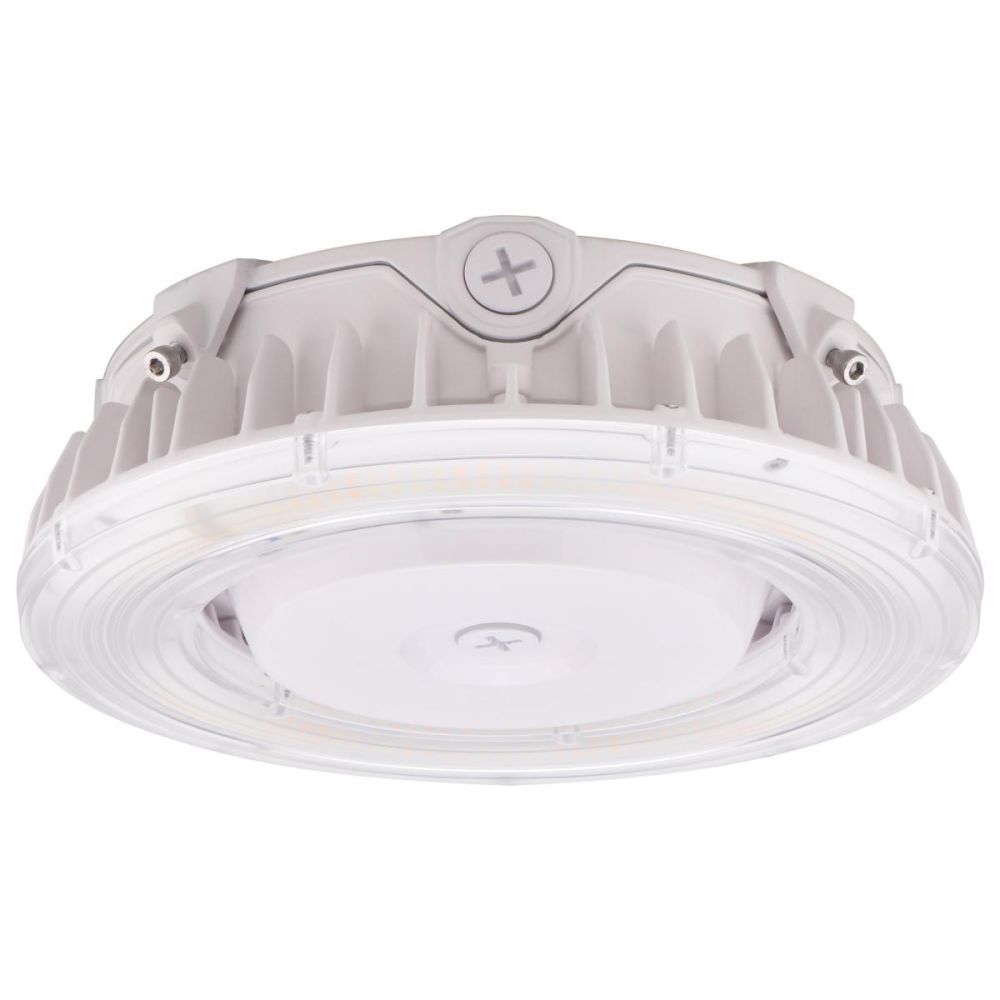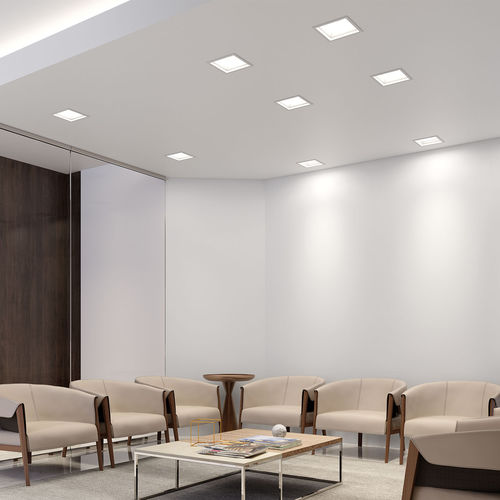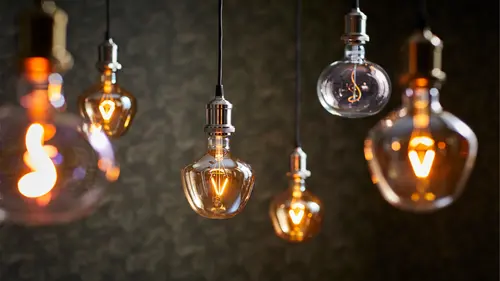
In modern horticulture, light isn't just a necessity—it’s a precision tool. Under-canopy lighting is one of the most promising techniques gaining traction among indoor growers and greenhouse professionals. Unlike traditional overhead systems, this method targets the lower parts of the plant, where leaves often receive insufficient light due to shading from the upper canopy. As a result, it helps activate photosynthesis in neglected areas, leading to better overall plant health, improved flower development, and higher yields.
Under canopy lighting is especially effective in dense canopies with limited light penetration, making it ideal for crops like cannabis, tomatoes, and leafy greens. In this guide, we’ll learn everything you need to know—from how it works and why it matters to the types of systems available and practical tips for implementation. Whether upgrading an existing grow setup or starting fresh, understanding canopy lighting can make a measurable difference in quality and production.
What Is Under Canopy Lighting?
Under canopy lighting, or intracanopy lighting, involves placing light sources beneath or within the plant canopy to illuminate lower leaves and bud sites typically shaded by the upper foliage. The goal is to maximize photosynthetic activity throughout the plant, not just the top layer. This approach uplifts light distribution in dense crop setups like vertical farms, greenhouses, and indoor grow rooms. Cannabis cultivators have reported a 20–25% yield increase under canopy lights, highlighting strong ROI potential (AROYA.io). Similarly, tomatoes grown with intracanopy lighting experienced an 11–21% fruit yield boost (Wei et al., 2021), underscoring its value across crops.
The Science of Beneath-Canopy Lighting
To understand the actual impact of under-canopy lighting, it’s essential to learn about the science of how plants absorb and respond to light. Yield increase doesn’t come from adding more light alone—it comes from delivering the right kind of light to the correct part of the plant.
This section breaks down key concepts like Photosynthetically Active Radiation (PAR) and light distribution, and how they relate to canopy management, PPFD, and DLI. By grasping the mechanics behind plant light uptake, growers can make more informed decisions to unlock hidden productivity in the lower canopy.
Photosynthetically Active Radiation (PAR)
PAR refers to 400–700 nanometers of the light spectrum which plants use for photosynthesis. It’s a critical factor in assessing the quality of light a plant receives. While traditional lighting systems aim to boost PAR levels at the canopy top, under canopy lighting ensures that shaded leaves can access usable light energy.
Measuring PPFD (Photosynthetic Photon Flux Density) allows growers to track how much PAR reaches specific plant zones. Over time, maintaining an optimal DLI (Daily Light Integral) through strategic light distribution supports healthier growth, improved plant structure, and more uniform development—essential factors for sustainable canopy management and consistent yield increase.
Light Distribution & Photosynthesis
Imbalance in tree size and canopy girth often limits photosynthesis and reduces overall plant efficiency. Targeted under-canopy lighting solves this issue by directing light to areas that need it most. When PPFD levels are balanced from top to bottom, lower leaves contribute more to the plant’s energy production, improving resource utilization.
Consistent light exposure also stabilizes hormonal signals within the plant, supporting better flower formation and nutrient transport. Combined with innovative canopy management, these gains contribute to a significant yield increase and overall crop quality improvement.
Key BenefitsUnder-Canopynopy Lighting
Under canopy lighting delivers more than just improved visibility—it reshapes how plants grow, respond, and thrive. Grounded in photobiology and smart canopy penetration, this technique directly supports greater productivity, healthier plants, and more resilient environments. Whether focused on light spacing, light defoliation practices, or microclimate control, this method addresses the most common limitations of overhead lighting.
The following sections detail the multifaceted value of under-canopy lighting, backed by real-world data and grower insights. These include boosting plant quality and reducing disease pressures.
Increased Yield
Research consistently supports the use of under-canopy lighting for significant yield improvements. In cannabis, growers report a 20–25% increase in flower mass, thanks to better canopy penetration and improved light exposure to lower bud sites (AROYA.io). In controlled tomato trials, light defoliation paired with intracanopy light delivery boosted fruit yields by 11–21% (Wei et al., 2021). These gains stem from improved light spacing, balanced energy distribution, and targeted support for photosynthetic areas that would otherwise remain underutilized. When designed with precision, under canopy lighting helps optimize both productivity and overall plant performance.
Improved Quality
Beyond quantity, under canopy lighting also improves plant quality. Consistent lighting throughout the canopy supports uniform development, resulting in denser flowers or fruits, richer terpene profiles, and increased cannabinoid content in cannabis. This even exposure helps balance growth hormones, reducing the formation of “larfy” or underdeveloped lower buds. Photobiology studies show balanced light cues across the plant structure uplift secondary metabolite production, which is key to aroma, flavor, and potency. With proper light defoliation and canopy structuring, growers can achieve superior crop appearance and value from top to bottom.
Pest & Disease Mitigation
Poor light penetration can lead to high-humidity zones in the lower canopy, encouraging mold, mildew, and pests. Under canopy lighting helps regulate the microclimate by improving airflow and light exposure in shaded areas. Healthier, well-lit foliage is less susceptible to stress and pathogen invasion. This strategy also makes pest monitoring easier, making lower plant sections more accessible. Integrated with proper ventilation and microclimate control, this approach can reduce reliance on chemical treatments and increase overall plant resilience, thus supporting a cleaner, more productive grow environment.
TypesUnder-Canopynopy Lights
Choosing the right lighting system is key to unlocking the full benefits of under-canopy lighting. Not all fixtures are created equal—different technologies offer unique advantages in terms of light spacing, spectrum output, and photobiology response. This section compares two popular options—LEDs and HPS fixtures—explaining how each supports canopy lighting strategies depending on your grow setup and environmental needs.
LED Light Bars & Strips
LED light bars and strips are the most popular for under-canopy applications. Known for being energy efficient and customizable spectrum output, they allow precise light spacing and spectrum targeting. With minimal heat output, LEDs support consistent microclimate control, avoiding hot spots that could stress the lower canopy. Their linear design offers flexible mounting options, perfect for navigating tight grow spaces. LEDs consistently yield and plant quality results when tuned correctly for red-blue or full-spectrum output. They're especially valuable in vertical farms and dense cannabis grows where canopy penetration is essential.
HPS Fixtures
While less common today, High-Pressure Sodium (HPS) fixtures are still used in large-scale or hybrid grow systems. R6 and R8 spectrums differ in red-orange output, with R8 offering a broader spectrum that better supports late-stage flowering. However, HPS units emit significant heat, making microclimate control more challenging in tight spaces. The wider road, non-directional light pattern also complicates light spacing, requiring careful placement to avoid uneven distribution. Despite these drawbacks, some growers prefer HPS for its high PAR output and familiarity. Stubs and LEDs remain the more practical and scalable solution for most under-canopy setups.
How to Choose the Right Under-Canopy Lights
Selecting the ideal under-canopy lighting system isn’t just about buying lights—it’s about aligning technical specs with your crop’s biology, canopy structure, and grow environment. Factors like spectrum, PAR efficacy, fixture size, heat output, and installation timing affect successful outcomes. Below, we discuss what to consider for optimal canopy penetration, microclimate control, and long-term performance.
Spectrum, Efficacy & PAR Output
The right spectrum supports targeted growth. Blue and red wavelengths are used to drive photosynthesis in shaded under-canopy lighting areas. Look for lights with high efficacy (µmol/J) and strong PAR output to maximize energy use. Full-spectrum LEDs with added far-red can also improve lower bud development. Always check the fixture’s PPFD ratings at various distances to ensure even light distribution across the lower canopy.
Fixture Dimensions & Placement Flexibility
Under-canopy lights need to fit comfortably within tight, leafy spaces. Slim, linear bars or modular strips are best for navigating complex layouts. Ensure enough placement flexibility to avoid leaf burn or shadow spots. Adjustable brackets or magnetic mounts can help optimize light spacing and allow easy repositioning as the canopy matures.
Certifications & Warranty
Choose lights that meet safety and performance standards such as ETL, DLC, CE, or FCC. These certifications verify product quality and energy efficiency. A solid warranty (minimum 3–5 years) provides peace of mind, especially for commercial-scale growers. Always review return policies and customer support options before purchasing.
Installation & Timing
Proper installation and timing are crucial to getting the most out of your under-canopy lights. The following best practices ensure optimal light delivery without disrupting your plant’s natural growth rhythm.
When to Turn On Under-Canopy Lights
Most growers introduce under-canopy lights in late vegetative or early flowering stages when the canopy thickens. Turning them on too early can waste energy, while waiting too long may limit the lights’ effectiveness. For cannabis, day 14–21 of flower is often ideal. Monitor DLI to maintain optimal lighting levels without stressing the plants.
Placement, Spacing & Defoliation
Install fixtures 6–12 inches below the canopy, ensuring even light spacing between bars. Avoid clustering or overlapping light zones. Combine with selective light defoliation to expose lower bud sites and improve airflow. Pruning fan leaves around shaded branches improves light reach and lowers humidity—a critical aspect of successful canopy management.
Heat & Environmental Management
Even low-heat LED systems raise ambient temperatures. Proper ventilation and air circulation is important to prevent microclimate issues under the canopy. Use fans to move air through the lower zones and monitor humidity closely. Balance your DLI by factoring top and bottom light sources to avoid overstimulation and energy waste.
ROI and Cost Considerations
While under-canopy lighting adds an upfront cost to your grow setup, the long-term returns can be substantial. From measurable yield increases to savings on trimming and improved product quality, these lights offer clear economic benefits when applied strategically. This section explores the financial aspects, from initial investment and power usage to how you can order and request layout guidance for bulk applications.
Initial Investment & Energy Consumption
Under-canopy lighting systems, mainly LED bars, require a moderate initial investment, typically ranging from $50 to $150 per fixture, depending on size and brand. However, modern LED designs are highly energy-efficient, delivering greater PAR output per watt than traditional lighting systems. Their low heat output also minimizes HVAC strain, helping reduce operational costs. When viewed over a growth cycle, energy savings combined with reduced crop loss from shaded areas can balance the initial spend. Growers focused on canopy management and light spacing often find the investment justified within 1–2 harvests.
Yield Increases & Savings
Adding under-canopy lights has consistently increased yields across various crops. Cannabis cultivators have reported 20–25% more flower weight, with reduced “popcorn” or green buds in the lower canopy, saving labor during trimming. Tomato growers saw 11–21% fruit yield boosts when using intracanopy lighting (Wei et al., 2021). These results underscore the ROI potential, particularly when paired with proper light defoliation and DLI monitoring. Improved plant quality supports higher market value, leading to better per-pound returns in commercial operations.
How to Order & Bulk Pricing
Ordering under-canopy lighting systems is straightforward. Most manufacturers and distributors offer direct online purchasing or consultative services to help with layout planning. For larger setups, inquire about bulk pricing and request a custom lighting map to ensure optimal canopy penetration and fixture placement. Reputable vendors also provide guidance on light spacing and environmental controls. Look for options with strong warranties and customer support to protect your investment and streamline installation.
FAQs
1. Is under-canopy lighting worth it?
Yes, under canopy lighting is worth it when used correctly. It boosts lower canopy productivity and yield by delivering light where it’s usually lacking. However, it must be carefully managed to avoid exceeding the plant’s optimal DLI, which can lead to light stress and reduced growth.
2. Does under-canopy lighting increase yield?
Yes, under canopy lighting can significantly increase yield. Studies show 10–25% gains in cannabis and tomatoes when paired with good canopy management. By activating photosynthesis in lower leaves, plants produce more energy and develop more uniform and productive bud or fruit sites throughout the canopy.
3. When to turn on under canopy lighting?
Turn on under canopy lights during early to mid-flowering, typically around day 16, when the upper canopy begins shading lower sites. Pair this with light defoliation to uplift canopy penetration, improve airflow, and ensure lower branches receive enough PAR to contribute to overall plant productivity.
4. Does under-canopy lighting reduce pests?
Yes, it helps reduce pests by improving airflow and lowering humidity in the lower canopy. Creating a less favorable microclimate for fungi and insects, under canopy lighting supports plant health and vigor, making it harder for common pathogens to establish themselves in shaded, stagnant areas.
5. What is the science behind canopy lighting?
Under canopy lighting directs PAR to shaded leaves, allowing them to photosynthesize and contribute to energy production. This improves hormone balance, encourages uniform growth, and supports consistent PPFD levels across the plant, leading to better structure, healthier development, and greater harvest quality from top to bottom.
Wrapping up
Under-canopy lighting is a proven technique for unlocking the hidden potential of your grow space. By delivering balanced light to lower foliage, it supports stronger yields, better-quality harvests, and improved plant health. From cannabis to tomatoes, the benefits span multiple crops and growing environments. With smart implementation—right spectrum, placement, and timing—you can achieve measurable ROI while uplifting overall canopy efficiency. Whether you're a hobby grower or managing a commercial facility, under-canopy lights are a practical upgrade worth considering. Check out high-performance, energy-efficient canopy lighting solutions at Buy LED Online—your trusted source for professional-grade grow lighting systems.







